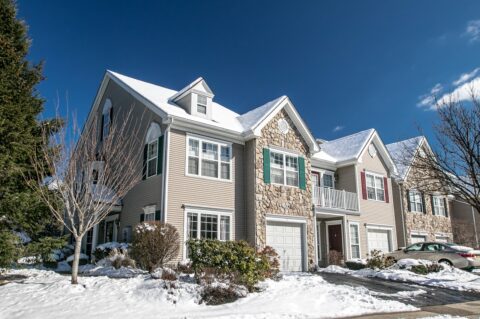The past year has seen some unique trends in the Virginia housing market, with the first three quarters seeing steady growth and the last few months seeing a slow-down, or a return to “normal.” But that normal is still higher than where we were before the COVID-19 pandemic struck. Let’s take a look at some of the key trends that have emerged in the Virginia real estate market over 2021.
Off to a unique start
Despite the economic ups and downs of 2021, Virginia’s housing market trends have stayed relatively true to the seasons. However, this year had a unique start. Typically, winter is a slow season for buying and selling. Yet the start of 2021 was much busier than usual, piggybacking off of fall and winter 2020, which also saw more market activity than usual. This is likely in part because people who had delayed buying or selling in spring 2020 due to the onset of COVID-19 were finally stepping back onto the market.
First quarter 2021
In the first quarter of 2021, the housing market continued going strong despite inventory continuing to shrink.
The Virginia REALTORS® Home Sales Reports conducted from January to March reflected this trend. Here are some of the highlights:
- In January 2021, there were 8,806 home sales in Virginia, which is 2,000+ more sales than the sales in January 2020, an increase of 31.1%.
- In February 2021, there was a total of $3.5 billion in sold volume statewide, an increase of 31.2% compared to February 2020. The volume of sold property in Virginia surged again due to increases in both sales and home prices.
- March 2021 saw increased seller activity in preparation for the spring; the number of home sales increased 36.0% between February 2021 and March 2021.
Second quarter 2021
Inventory began to expand in the spring, though it still remained limited in local markets. Prices continued to rise and sales volume increased:
- In April 2021, statewide sales volume totaled $5.9 billion, an increase of 51.7% compared to April 2020 and a 15.7% increase over the previous month, March 2021.
- In May 2021, the median home sales price was up 16.6% from the same time last year, good news for sellers. Inventory slightly expanded.
- Mortgage rates dropped to 2.8%, a near-record low in June 2021. Mortgage rates will continue to stay at historic lows for much of the year.
Third quarter 2021
Summer in Virginia was typical for the state, with a rise at the beginning of the summer, and then a slow-down at the end. Inventory continued to expand over the summer, albeit slowly:
- In August 2021, there were 20,363 active listings statewide, 10.6% lower than the supply level in August 2020. This was the smallest year-over-year inventory decline that Virginia’s housing market has seen in more than two years, signaling that inventory is on the rise.
As fall approached, buying and selling activity slowed down, reflecting typical seasonal patterns:
- In September 2021, there were 13,079 home sales, down 2.0% from September 2020. Sales decreased by 9.4% between August and September 2021.
Fourth quarter 2021
As we close out the year, we have yet to see whether the market will be as active as it was in winter 2020. Fall 2021 was not as busy as fall 2020, but early winter saw renewed buyer activity.
- October 2021 saw a 3.9% dip in home sales from September and a 6.4% dip from October of the previous year.
- In November 2021, home sales were up almost 4% from November of the previous year.
In a reversal of earlier trends, inventory shrank during the fall and winter:
- By the end of November 2021, there were 16,242 active listings, which is 24.9% lower than the supply at the end of November 2020. Inventory also decreased by 13.4% between October and November.
The numbers are still coming in for December, but if trends continue, we might expect to see the real estate market leveling out to a typical Virginia winter.
What’s in store for 2022?
In keeping with the relatively low inventory across the nation, the seller’s market is likely here to stay in 2022. While there is talk of a “crash” or a “bubble burst,” our current economy and real estate markets are not repeats of 2008. Homeowners have a significant amount of equity in their homes and mortgage rates will likely remain low, leaving the market more available for more first-time home buyers.
With 2021 almost in the rearview mirror, let’s look forward to the new year, one that will hopefully be prosperous for buyers, sellers, and renters alike!

 Facebook
Facebook
 X
X
 Pinterest
Pinterest
 Copy Link
Copy Link





